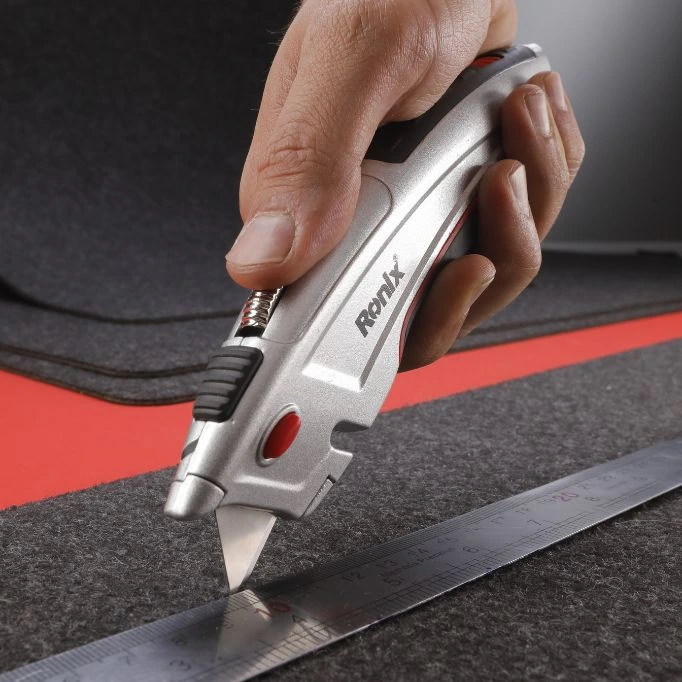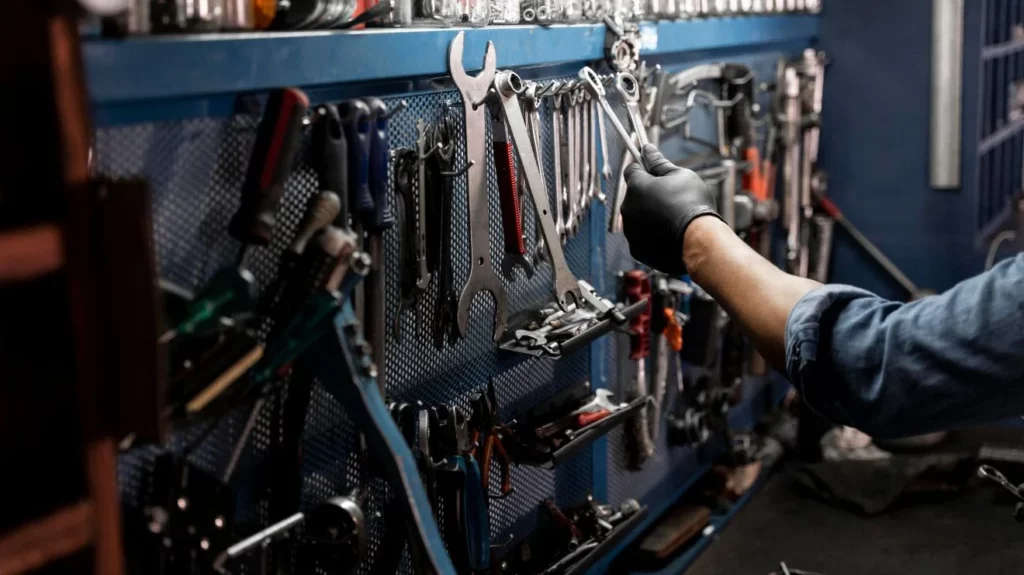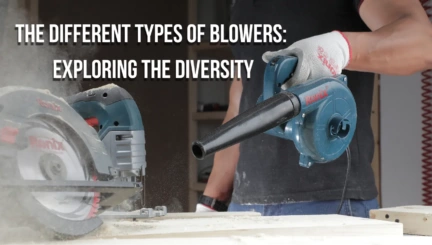- 6min
- 2579
- 0
Have you ever seen those people who work long hours and stay fresh, happy, and full of energy? Meanwhile, you might find yourself feeling exhausted right after starting your work and even when you get home and try to rest. Well, this is where ergonomic hand tools have a lot to say.
Be with me today, and let’s take a closer look at this important topic at work and on job sites.
Ergonomic hand tools: don’t underestimate them
Whatever your task or project is, you will definitely use your hands in these tasks, and you will use at least one hand tool.
Using a normal tool for long hours will cause you pain not only on your hands and wrists but also on your shoulders and, for a long time, your neck and your back, and soon you will find yourself not being able to work like before. You are always tired and have pain in your arms and back.
Unfortunately, designers won’t think about the ergonomic issues with hand tools in their designs these days, and they will think about facts like the look of their products, the color, or the texture first.
So next time you want to buy a tool, don’t go for the shape or color first. Go for the ergonomic ones!

Ergonomic Gardening Hand Tools
Be careful when using and buying ergonomic hand garden tools. Gardening tools directly affect your hands and put a lot of pressure on your arms and back. When using tools such as shovels, pruning shears, loppers, hand trowels, and others, consider the following factors:
Tool Weight: The weight of your tools has a big impact on your wrists and arms. The design should minimize pressure on your body, especially for tools that require you to hold your arm high to reach higher branches.
Experience Soaring Sales with Top-Notch Wholesale Hand Tools
Grip: The grip is so important. Gardening tools are usually sharp, and a slippery grip can cause accidents and injuries. Look for tools with non-slip grips to reduce strain and prevent injuries.
Finger Design: Tools with a trigger finger design require less force, protecting your arms, fingers, and wrists. This design reduces the force and vibration that can cause hand fatigue and injury.
So, if you’re a gardening fan, choosing ergonomic hand tools is a smart choice.

Industrial Ergonomic Hand Tools
After talking to my friends who work in industrial settings, I noticed two common issues among them. First, they are always tired, and second, if they go for a checkup with a doctor, they often discover numerous muscle and bone injuries, which is no surprise.

They usually don’t understand where this tiredness and these injuries come from and constantly complain about these issues. But what if they knew that all of these problems could be avoided by choosing ergonomic hand tools? They wouldn’t continue working the same way as before.
Here are some examples of industrial ergonomic hand tools commonly used in different work environments:
- Use tools that avoid bending or rotating your wrist.
- Avoid tools with finger grooves that do not fit your hands.
- Avoid using tools with sharp edges.
- Choose tools with a compressible gripping surface rather than hard plastic.
- Avoid tools with repetitive trigger finger actions.
- Choose tools with large switches.

How are ergonomics hand tools designed?
Ergonomic hand tools, designed to make work more comfortable and safer, come in two types: dynamic loading ergonomic hand tools and static loading ergonomic hand tools. The dynamic loading ones are built to tackle tasks that involve a lot of movement and repeating actions. These tools are created to reduce the impact of these repetitive movements on your body. They have comfy handles and features like vibration reduction, which makes lifting or turning things over and over less tiring. On the other hand, the static loading ergonomic hand tools are perfect for tasks that require holding a tool in one place or applying force for a while. Whether it’s dynamic or static loading tasks, ergonomic products are all about making work easier and safer.

Let’s take a closer look at the process of designing now.
In the process of ergonomic hand tool design, there are some factors that are more important than others.
- The weight of the tool is important. Heavy tools can put lots of pressure on users’ wrists, and you will get tired soon.
- You should keep the age, gender, and type of task that you are doing in mind. Different ages and genders need different tools and different sizes.
- When we are talking about hand tools, the first thing that comes to mind is the relationship between your hands and the tool. So ergonomic handles for hand tools are so crucial.
- Another thing that I have seen a lot recently and that I love is the fact that the designs of the tools come with a specific design that you can adjust to your needs with different sizes and settings.

ergonomic hand tools and their effect on safety
Don’t underestimate the importance of ergonomics in hand tools. Being safe during work is the most important thing. Using a tool in the wrong way and position can cause you lifelong problems such as Hand-Arm Vibration Syndrome or back problems.
So, don’t take it easy when choosing your hand tools. It’s directly related to your life and health. Even a bad handle can cause a sudden slip, resulting in loss of control and injuries to your fingers or arm.
Additionally, a poorly ergonomic hand tool will make you put too much effort into using it, and over time, you will feel tired all the time.

The purpose of working, whatever it is, is not meant to make you tired. Your task and job should be enjoyable and easy for you. Ergonomic hand tools will make your tasks and projects much easier and give you the opportunity to avoid getting tired during work. In summary, ergonomics should be the most important thing when it comes to designing and choosing products, particularly hand tools. It’s even the top priority when selecting products for several uses in your job. Therefore, always keep ergonomics in mind when making your tool choices.
FAQ
What is ergonomics in the tools industry?
Ergonomics in the tools industry involves designing tools and equipment to be user-friendly, safe, and efficient, considering factors like user comfort, reduced fatigue, and safety features.
How important is to use ergonomic hand tools?
Using ergonomic hand tools is crucial for several reasons. These tools are designed to reduce physical strain and discomfort, which can help prevent musculoskeletal injuries and improve worker well-being.

Ronix
27 January 2024









